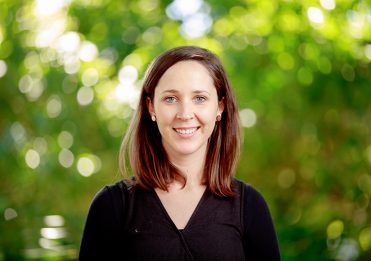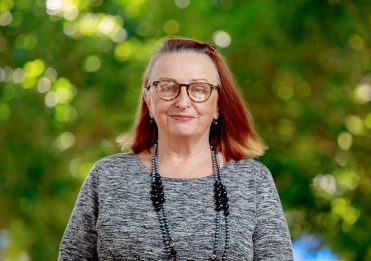Originally published in 2013
As spectators or audience members, we thrill to the exploits of ‘freakishly’ talented athletes and ‘prodigiously’ talented musicians. As teachers, we are sometimes impressed by the ‘naturally’ talented students in our care. When confronted with the freakish, the prodigious, and the natural we are amazed and immediately identify—or are in awe of—the innate or ‘god-given’ talents on display.
The idea of talent has become a pervasive one. It was kick-started by Francis Galton (a cousin to and admirer of Charles Darwin) in 1869 when he co-opted many of Darwin’s ideas for his own book Hereditary Genius (Coyle, 2009). Galton wrote:
That a man’s natural abilities are derived by inheritance, under exactly the same limitations as are the form and physical features of the whole organic world … I have no patience with the hypothesis … that babies are born pretty much alike and the sole agencies in creating differences … are steady application and moral effort. (cited in Coyle, 2009)
In the world of sport this idea is often put forth by exercise physiologists who espouse the view that DNA and genetic make-up are the ultimate arbiters of success. There is, however, a growing school of thought that seeks to challenge, in the words of Malcolm Gladwell (2009), ‘The Talent Myth’ and it is through the broad psychological idea of ‘skill acquisition’ that this is happening.
Physical Education teachers have been intimately acquainted with the principles of skill acquisition, as they relate to physical performance, for years. In 1967, two researchers from the Department of Psychology at the University of Oregon, Paul Fitts and Michael Posner laid the foundation for the systematic analysis of skill development with their three-stage model (Magill, 2007). The Fitts and Posner Model proposes three stages of learning a motor skill:
- The cognitive stage (understanding)
- The associative stage (practice)
- The autonomous stage (automatic reference).
Teachers of Physical Education have been consciously and unconsciously applying this model to their teaching ever since. Skill acquisition allows us to look at physical performance as a whole plan, or motor program, and to break down the plan into its component parts, or sub-routines. In effect, the learner is encouraged to break large, complex tasks into smaller, more manageable ones. In the language of education, these students are ‘chunking’. In doing so, they are engaging in deep practice. The teaching is progressive and deliberate. The student looks at the whole motor program and often the approach mirrors that of legendary UCLA Basketball coach, John Wooden.
A 1974 analysis of Wooden’s teaching identified that one of his most frequent forms was a three-part instruction where he modelled the correct way to do something, showed the incorrect way, and then re-modelled the correct way (Coyle, 2009). His reviewers, educational psychologists Ron Gallimore and Roland Tarp, wrote that Wooden’s ‘demonstrations … are of such clarity that they leave an image in memory much like a textbook sketch’ (Coyle, 2009). It is at this point that the motor program is broken down into its sub-routines, looking at the first and then the second, combining them, before looking at the third, combining one and two with three, and so-on. With the advent of modern camera and video technology, teachers and coaches are able to enhance demonstration and analysis with video images of elite and student performers in all of their slow-motion and freeze-framed glory. The sub-routines have never been more obvious or important.
A seismic shift in our understanding of skill acquisition could have occurred in 1993 when Dr K Anders Ericsson, of the University of Colorado, wrote a paper published by the American Psychological Association’s Psychological Review, called ‘The Role of Deliberate Practice in the Acquisition of Expert Performance’. Unfortunately, no-one beyond tertiary intuitions paid much attention to his ground-breaking, convention-shattering work until May 2006 when Freakonomics authors Steven Levitt and Stephen Dubner wrote a piece about his work in The New York Times, titled ‘A Star is Made’. People were outraged but fascinated. A raft of non-fiction best sellers, all drawing on Ericsson’s work, followed the publication of the article.
At the most basic level, Ericsson argues that there is probably no such thing as innate talent or, if there is, it is overrated. Of the books and articles that sprung from Ericsson’s work, all share a basic tenet: when it comes to success, expertise is significantly more important than ‘talent’, and the way to become expert is through deliberate or purposeful practice. The importance of expertise cannot be overstated, but experience is not enough. Ericsson and others proclaim the ‘10,000-hour-rule’— that is, 10 000 hours of practice, or the equivalent of 10 years, as the minimum amount of time required to become expert.
Almost without exception, anyone who has risen to the top of his or her field can be identified as having spent this prerequisite amount of time engaged in the activity before they began producing their best work. This is true of Mozart, Tiger Woods, Bill Gates and the members of the Beatles (Gladwell, 2008). But, 10 000 hours alone is not enough to create elite performance. Colvin (2008) also dismisses the idea that expertise is related to specific inborn ability, further stating that expertise is not related to intelligence and memory.
Ericsson’s 1993 paper says it best: ‘The differences between expert performers and normal adults reflect a life-long period of deliberate effort to improve performance in a specific domain.’ In an explicit rejection of the ‘you’ve-got-it-or-you-don’t’ view, Ericsson effectively claims that ‘deliberate practice’ is the crucial component in relation to the development of expertise. Other authors use different terminology, such as ‘purposeful practice’ or ‘deep practice’, which are all variations of the same concept. Even so, the concept itself can be clearly defined.
Colvin (2008) writes:
Deliberate practice is characterised by several elements … It is activity designed specifically to improve performance, often with a teacher’s help (because of his or her ability to see you in ways that you cannot see yourself); it can be repeated a lot; feedback on results is continuously available; it’s highly demanding mentally, whether the activity is purely intellectual, such as chess or business-related activities, or heavily physical, such as sports (although four to five hours a day seems to be the upper limit of deliberate practice); and it isn’t much fun (because it requires us to insistently seek out what we’re not good at).
It is further defined by Matthew Syed (2010) when he writes:
Ericsson calls it ‘deliberate practice’ to distinguish it from what most of the rest of us do. I am going to call it purposeful practice. Why? Because the practice sessions of aspiring champions have a specific and never-changing purpose: progress. Every second of every minute of every hour, the goal is to extend one’s mind and body, to push oneself beyond the outer limits of one’s capacities, to engage so deeply in the task that one leaves the training session, literally, a changed person.
It is in the deliberate consciousness of skill acquisition, and the deliberate extension of performance, that accelerated learning takes place, because this is also where failure is most evident.
Figure skating might be an unlikely activity to illustrate the point; however, in the 1990s researchers conducted what has been identified as a revelatory study into the difference between elite figure skaters and their less elite counterparts (Syed, 2010). It was discovered that the difference between the two groups was not to be found in genetics or other such things, but rather in the type of practice they engaged in:
Elite figure skaters regularly attempt jumps beyond their current capabilities (even when measured relative to their superior abilities); less elite skaters do not. The conclusion is as counterintuitive as it is revealing: top skaters fall over more often during their training sessions. (Syed, 2010)
Colvin (2008) further expands:
A study of elite figure skaters found that sub-elite skaters spent lots of time working on the jumps they could already do, while skaters at the highest levels spent more time on the jumps they couldn’t do, the kind that ultimately win Olympic medals and that involve lots of falling down before they’re mastered. Landing on your butt twenty thousand times is where great performance comes from.
Of course, the problem with this scenario is in getting people to want to ‘fall over more often during their training sessions’. For this to happen, two things are required.
Daniel Coyle (2009) identifies the first of these as ‘ignition’: an image, an interaction, a transformational moment, a motivational jolt—what psychologist Michael A Rousell (2007) calls a ‘spontaneous influence event’. This is the moment when motivation changes from the extrinsic to the intrinsic. Physical Education teachers know, through the study and teaching of sport psychology, that the most successful athletes (and in their place could be musicians, actors, doctors, and so on) are those whose motivation is internalised. Coyle (2009) explains the importance of this spark: ‘Ignition supplies the energy, while deep practice translates that energy over time into forward progress.’
The second important element in getting people to ‘fall over more’ is in using language that encourages them to do so. This is the language of Carol Dweck (2006) and her ‘growth mindset’. It is language that praises effort rather than talent. Syed (2010) states it clearly when he writes about Dweck’s successful experiments:
We should emphasise how abilities can be transformed through application; … we should teach others and ourselves to see challenges as learning opportunities rather than threats; … we should interpret failure not as an indictment but as an opportunity.
Our goal then, as educators, and indeed for Brisbane Girls Grammar School as a place of teaching and learning, is to further develop an environment wherein deep, or deliberate, or purposeful practice happens routinely. This is the ‘exceptional scholarship’ of our Aspiration. It is not necessarily the job of the School to become a ‘hotbed’ of a very narrow and specific type of performer given that, by design, we establish an ‘educational foundation’ for young women by encouraging in them an appreciation for a broad-based, liberal education.
In Outliers, Malcolm Gladwell (2008) retells the story of a 12-year-old girl from the Bronx who was given the opportunity to attend an experimental public school that takes a random sample of children from extremely poor neighbourhoods. The school emphasises effort and looks to encourage deep practice. Prior to her attending the School, she lacked direction, but was now extraordinarily motivated. Gladwell (2008) says, ‘She’s just a human being responding in a rational way to the requirements and incentives of her surroundings. This thing we call initiative and hard work and persistence is a social construction. It can be reproduced.’ One of the striking things about Brisbane Girls Grammar School, particularly for newcomers (staff and students alike), is in how hard the staff and students work. The School’s motto—Nil sine labore—can be both a ‘war cry’, as it is in the School song, and an unspoken ‘feeling’. In the very many ways that it presents itself, it is never forced or contrived.
Over 138 years, the School has developed into a place where people can immerse themselves in learning. Rather than rest on the laurels of our reputation—and that is certainly not the culture of the School—our challenge is to create an environment where there is ever-increasing opportunity to engage students and staff in deep learning. If we increase our understanding of purposeful practice, with the first step being awareness, and apply some of the principles that relate to it, we can achieve this.
References
Colvin, G. (2008). Talent is overrated: What really separates world-class performers from everybody else. Boston: Nicholas Brealey.
Coyle, D. (2009). The talent code: Greatness isn’t born. It’s grown. New York: Bantam.
Dubner, S. J., & Levitt, S. D. (2006). A star is made. The New York Times. Retrieved August 25, 2012, from http://www.nytimes.com/2006/05/07/magazine/07wwln_freak.html
Dweck, C. S. (2006). Mindset: The new psychology of success. New York: Random House.
Ericsson, K. A., Krampe, R. T., Tesh-Romer, C. (1993). The role of deliberate practice in the acquisition of expert performance. Psychological Review, 100(3), 363–406.
Gladwell, M. (2008). Outliers: The story of success. New York: Back Bay Books.
Gladwell, M. (2009). What the dog saw. New York: Back Bay Books.
Magill, R. A. (2007). Motor learning and control: Concepts and applications (8th ed.). New York: McGraw-Hill.
Rousell, M. A. (2007). Sudden influence: How spontaneous events shape our lives. Westport: Praeger.
Syed, M. (2010). Bounce: How champions are made. London: Fourth Estate.
Read reflective commentary from Director of Health and Physical Education, Mr Stephen Fogarty, on his article, ‘Nil sine labore—Talent’s got nothing to do with it’.
When I wrote this piece in 2013, I had just finished a year’s worth of research and reading based on the topic of purposeful practice. Teachers of Health and Physical Education understand that if you practice a skill poorly, you just get better at performing that skill poorly. On the other hand, purposeful, deliberate, guided practice can lead to significant advances in skill development.
My re-engagement with the concept started when I read a book written by the late, legendary UCLA Basketball Coach, Mr John Wooden (1997). Not long after, I stumbled across the Ericcson (1993) article. There was an obvious synchronicity and I set about reading many related texts. Everything I read made me think about my own learning over the years. I can do some things very well because I have been able, and motivated, to engage in purposeful and deliberate practice. I have found joy in the (sometimes mind-numbing) repetition of learning and doing. There are other things that I have started over the years (learning the guitar springs to mind) that I’ve never been able, or willing, to devote myself too. I can blame lack of time and motivation but the more I understand about purposeful practice, the more I know that I cannot blame lack of potential.
Every year, as part of a program organised by the School’s Centre for Professional Practice, I speak to pre-service teachers who have come to learn at Girls Grammar. When I address them, I deliver a version of my article from 2013. With the addition of some practical components and activities to illustrate certain points, the presentation is always well received. When pre-service students engage in these activities, the concept of purposeful practice moves from being an abstract one to a practical one. The students begin to see that real learning is not tied to chance. Instead, real learning comes from a conscious, and conscientious, decision to be better. It comes from a deliberate decision to embrace challenge.
The concept is a good fit for the School motto: Nil Sine Labore. Purposeful practice acknowledges that people may be ‘blessed’ with certain cognitive, creative, and/or physical abilities, but that these need to be developed through hard work.
I believe in purposeful practice. It is the only way we are ever able to learn how to do something well.
Mr Stephen Fogarty
Director of Health and Physical Education
References
Ericsson, K.A., Krampe, R.T., & Tesh-Romer, C. (1993). The role of deliberate practice in the acquisition of expert performance in psychological review. New York, New York: American Psychological Association
Wooden, J., & Jamison, S. (1997). Wooden: A lifetime of observations and reflections on and off the court. New York, New York: McGraw Hill.




